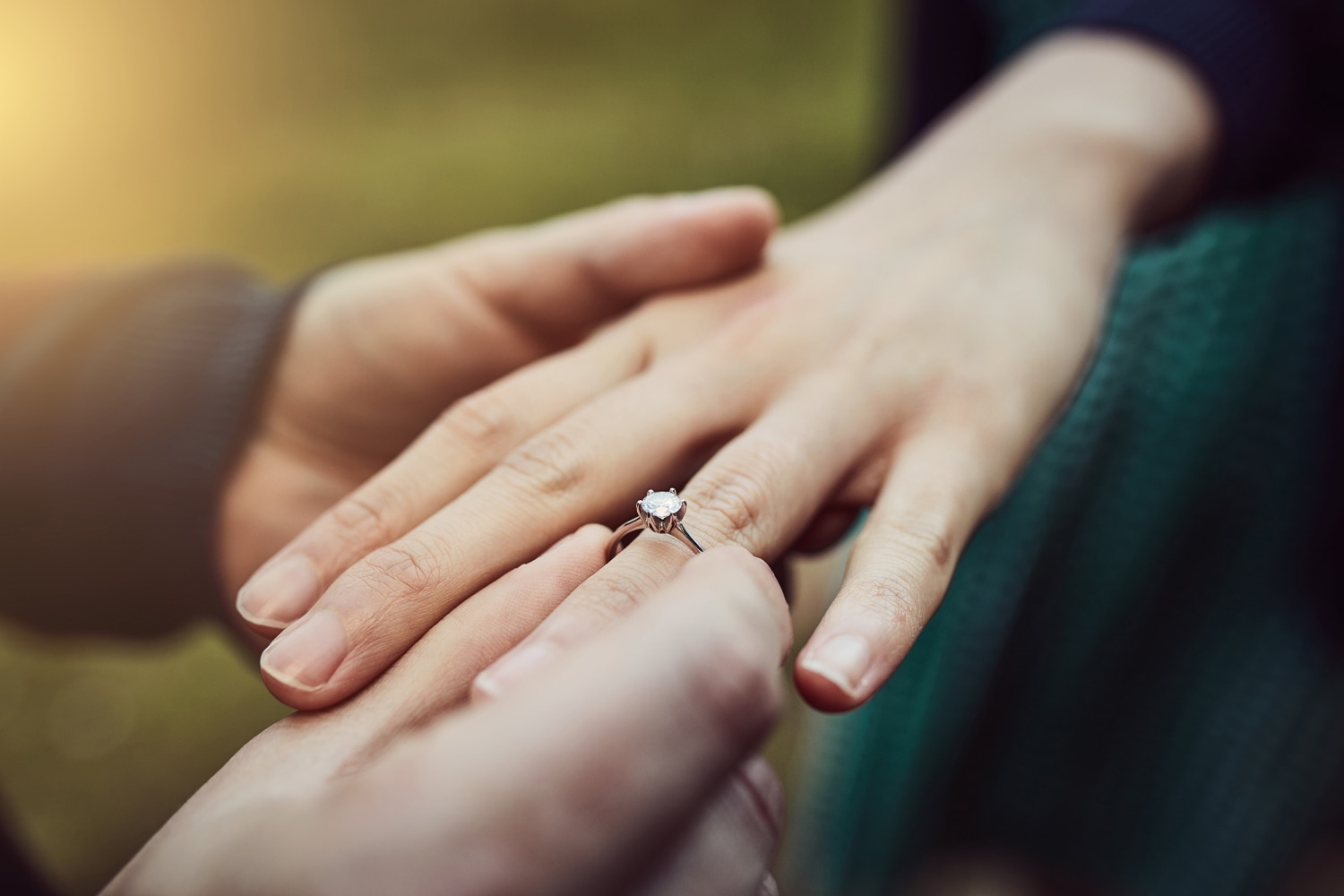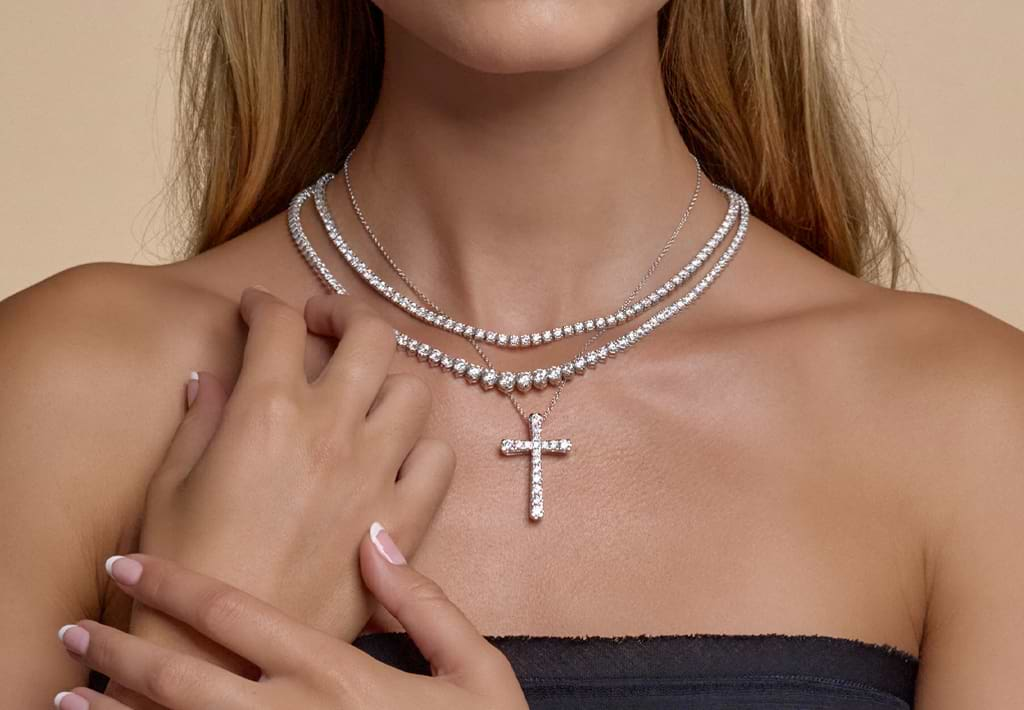When it comes to choosing the perfect gemstone for an engagement ring, fine jewelry, or a luxury investment, sapphires and diamonds are two of the most popular options. Both stones are revered for their beauty, rarity, and enduring appeal, but they are quite different in terms of composition, symbolism, and practical considerations. This article will compare sapphires vs diamonds across several key factors, including appearance, durability, symbolism, cost, and care requirements.
1. Appearance
- Diamonds: Diamonds are known for their unparalleled brilliance and sparkle. This is due to their exceptional hardness (10 on the Mohs scale) and the way they refract light. The “fire” or dispersion of light in a diamond is what gives it its dazzling effect. Diamonds are typically colorless, though they can be found in various shades like yellow, blue, and pink, with the most prized stones being completely colorless or near-colorless.
- Sapphires: Sapphires, on the other hand, are part of the corundum family (the same family as rubies). While they are most commonly recognized in their striking blue hue, sapphires come in a wide range of colors, including pink, yellow, green, and even colorless. Their color intensity can vary significantly, and the most valuable sapphires are those with a rich, deep blue or vibrant pink. While sapphires do not exhibit the same level of brilliance as diamonds, they are still highly attractive and can have a distinct, velvety sheen when cut properly.
2. Durability
- Diamonds: Diamonds are the hardest known natural material, scoring a perfect 10 on the Mohs scale of hardness. This makes them incredibly resistant to scratches and wear. As a result, diamonds are an excellent choice for daily wear, such as in engagement rings or other fine jewelry that is regularly exposed to physical contact.
- Sapphires: Sapphires are also incredibly durable, scoring 9 on the Mohs scale. While they are not as hard as diamonds, they are still highly resistant to scratching and other types of damage. Sapphires are durable enough to withstand daily wear and are often used in rings, necklaces, and bracelets. However, they may be more prone to chipping along sharp edges compared to diamonds.
3. Symbolism and Meaning
- Diamonds: Diamonds have long been associated with love, commitment, and eternal beauty, making them the most popular gemstone for engagement rings. Their rarity, strength, and clarity symbolize an unbreakable bond, which is why diamonds are often chosen to represent everlasting relationships. The phrase “a diamond is forever” captures the enduring nature of this gemstone and the feelings of permanence it evokes.
- Sapphires: Sapphires have their own rich history of symbolism, often representing wisdom, loyalty, and nobility. Historically, blue sapphires were considered the “royal stone” and were worn by kings and queens for protection. In modern times, sapphires are seen as a symbol of loyalty and fidelity, making them another popular choice for engagement rings. The deep blue hue is often associated with calmness, trust, and integrity.
4. Cost
- Diamonds: Diamonds tend to be more expensive than sapphires, primarily because they are rarer, especially when it comes to larger stones with exceptional color, clarity, and cut. The price of a lab created diamonds is influenced by the “Four Cs”—carat weight, color, clarity, and cut—which can dramatically affect its price point. The scarcity of high-quality diamonds further drives their cost.
- Sapphires: Sapphires are generally more affordable than diamonds, especially when comparing stones of similar size and quality. While high-quality sapphires, particularly those with vivid blue or other vibrant colors, can still command a significant price, they are often more accessible than diamonds of comparable size and quality. Factors like the gemstone’s color, origin, and cut can influence the price, but sapphires tend to offer more value for money than diamonds.
5. Care and Maintenance
- Diamonds: Despite their hardness, diamonds require careful cleaning and maintenance to retain their brilliance. Over time, they can accumulate oils, dirt, and grime, which can dull their sparkle. Cleaning diamonds regularly with a soft cloth and mild detergent or using professional jewelry cleaning services is recommended. Additionally, diamond rings should be checked periodically to ensure that the prongs or settings are secure, as diamonds can sometimes become loose over time.
- Sapphires: Like diamonds, sapphires are relatively easy to care for due to their durability. However, they can still be damaged if exposed to sudden impacts or extreme temperatures. Cleaning a sapphire typically involves using a soft brush and mild soap solution. It’s important to avoid harsh chemicals, as they can damage the stone’s surface. Sapphires should also be stored properly, preferably in soft pouches or individual compartments, to avoid scratches from other gemstones.
6. Ethical Considerations
- Diamonds: The diamond industry has long been associated with ethical concerns, particularly related to “blood diamonds” or “conflict diamonds.” However, in recent years, the industry has made strides toward greater transparency and ethical sourcing, with initiatives like the Kimberley Process Certification Scheme aiming to reduce the trade in conflict diamonds. Consumers who are concerned about the ethical implications of their diamond purchase can choose diamonds that are certified as conflict-free or opt for lab-grown diamonds.
- Sapphires: Sapphires are generally considered to be more ethically sourced, especially when they come from reputable mining operations. However, like all gemstones, the ethical practices of sapphire mining can vary. Many consumers now choose sapphires that are certified as ethically sourced or opt for synthetic sapphires, which provide a cruelty-free and environmentally responsible alternative.
Conclusion
In the battle of sapphires vs. diamonds, the choice largely depends on personal preference, budget, and the specific qualities you value in a gemstone. Diamonds are renowned for their unmatched brilliance, hardness, and timeless symbolism of eternal love. Sapphires, with their wide array of colors, rich history, and strong durability, offer an equally beautiful and unique alternative, often at a more affordable price point.
Ultimately, both stones are worthy of admiration, each offering something distinct. Whether you choose a diamond for its dazzling sparkle or a sapphire for its captivating color and royal associations, both gemstones have a place in the world of fine jewelry and luxury.





